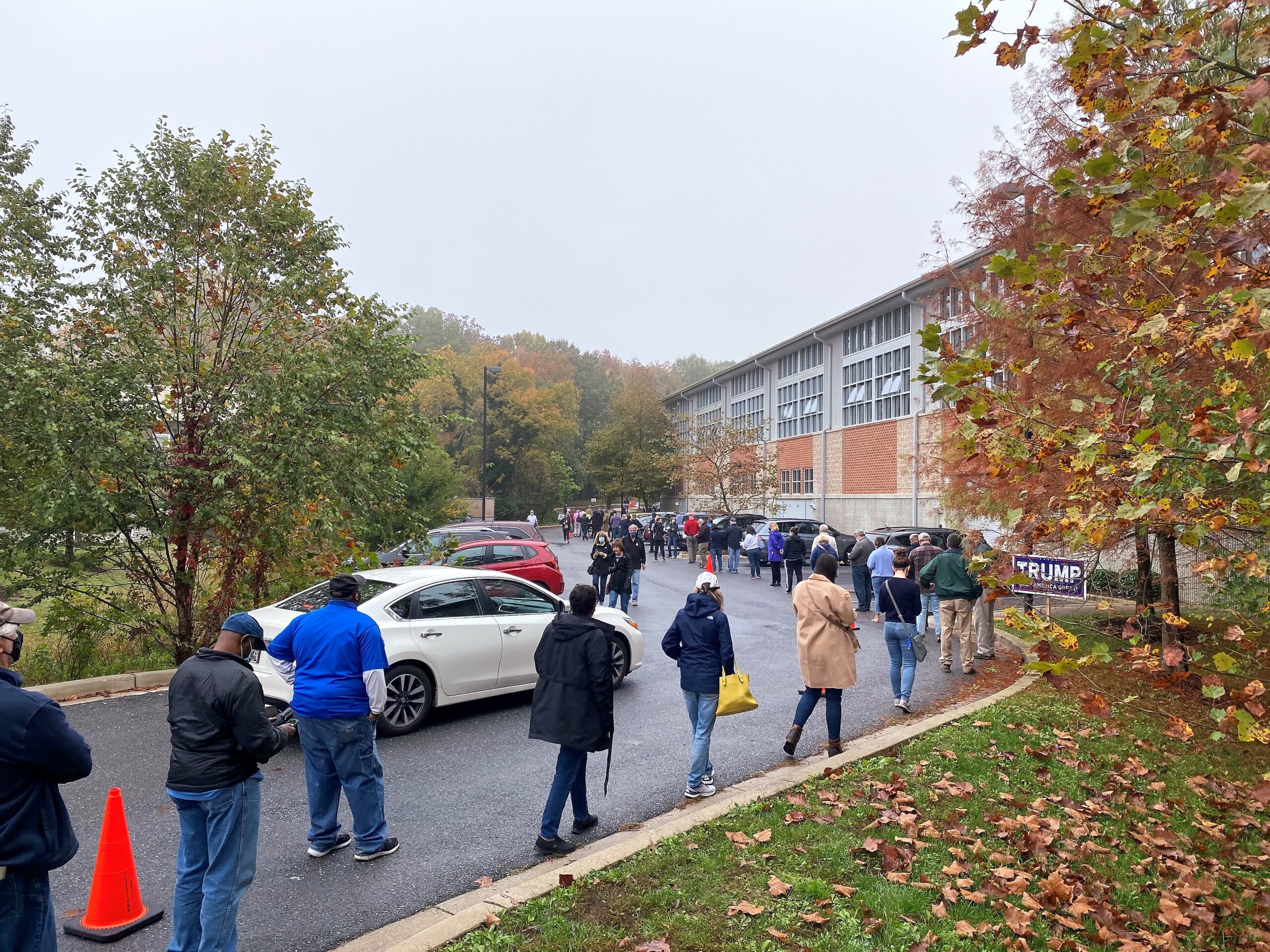Senate Gives Final Approval to Early Voting Center Expansion

The Maryland Senate gave final approval to a bill expanding the number of early voting centers across the state Wednesday after a final round of heated partisan debate and failed Republican amendments.
House Bill 745, sponsored by House Majority Leader Eric G. Luedtke (D-Montgomery), would increase the number of early voting centers required in Maryland’s counties based on the number of registered voters in each jurisdiction. The legislation passed the Senate in a 33-14 vote.
If Gov. Lawrence J. Hogan Jr. (R) allows the bill to become law, the state’s formula for determining the number of early voting centers in its 24 jurisdictions will see an overhaul: Currently, counties with less than 125,000 voters are required to have just one early voting center; counties with between 125,000 and 200,000 are required to have three early voting centers; counties with 200,000 to 300,000 voters are required to have four early voting centers; counties with 300,000 to 450,000 are required to have seven early voting centers; and counties with more than 450,000 registered voters are required to have 11 early voting centers.
Luedtke’s bill would broaden that formula, and require that counties:
- With less than 50,000 registered voters have one early voting center;
- With 50,000 to 100,000 registered voters have two early voting centers;
- With 100,000 to 200,000 registered voters have three early voting centers;
- With 200,000 to 300,000 registered voters have five early voting centers;
- With 300,000 to 400,000 registered voters have seven early voting centers;
- With 400,000 to 500,000 registered voters have nine early voting centers;
- With 500,000 to 600,000 registered voters have 11 early voting centers;
- And with more than 600,000 registered voters have 13 early voting centers.
Under both current law and the bill, counties and Baltimore City are able to tack on an additional voting center if needed.
The bill also requires local boards of elections to consider a variety of factors when determining the location of such facilities as accessibility to historically disenfranchised communities and ensuring that voting centers are distributed in an “equitable” way throughout the county.
On Wednesday, Senate Minority Leader Bryan W. Simonaire (R-Anne Arundel) attempted to tack on “the geographical distance between early voting centers across the county” to the list of factors local boards of elections need to consider – a proposal that led to intense debate before it was rejected.
Other Republican lawmakers, including Sen. Justin D. Ready (R-Carroll) and Sen. George C. Edwards (R-Garrett), pointed to the long distances some voters in rural counties would have to drive to access early voting centers in pressing for geographical distance to be added to the bill, but Democrats said such a requirement was unnecessary.
“The only benefit will be for the trees,” Sen. Arthur Ellis (D-Charles) said. “Because we’ll go far distances with very few residents. We’ll have so many voting centers, with … very few residents to really utilize that.”
And Sen. Katie Fry Hester (D-Howard) said the location of early voting centers is a “super complicated issue” that should be left to local boards of elections. She said Simonaire’s amendment was doubly unnecessary because the bill already requires local boards to ensure early voting centers are equitably distributed throughout the county.
But Simonaire pushed back on that argument, and suggested that equity is “in the eye of the beholder.” He said that, because the bill already requires local boards to consider proximity to dense concentrations of voters when determining the location of early voting centers, adding geographic distance to the list of considerations would be a matter of fairness.
“I’m a little offended that this somehow just goes over the top,” Simonaire said.
Senate Education, Health and Environmental Affairs Chairman Paul G. Pinsky (D-Prince George’s) argued that, without considering county population centers in the placement of early voting centers, local boards of elections would effectively disenfranchise voters.
“To ignore the population centers is to bury our heads in the sand and say, in fact, it does have a political bend to it,” he said.
That amendment was rejected in a 17-30 vote. Two other amendments by Simonaire, which would have respectively required the state to pay for additional early voting centers that result from the formula change and required the State Board of Elections to compile a report and make recommendations on early voting center use over the next few election cycles were also rejected.
Simonaire called the additional early voting centers an “unfunded mandate” on local government, but Pinsky said adding such language during the final debate on the bill would be improper. Sen. Cheryl C. Kagan (D-Montgomery County) agreed with Pinsky, but added that she thinks the legislature should tackle the issue in separate legislation.
Kagan’s own Senate Bill 747, a more sweeping election bill, would require, among other reforms, that a county’s share of the election cost be based on its “voting age population” as determined by state election officials. That proposal hasn’t moved out of the Senate Education, Health and Environmental Affairs Committee — and the House equivalent, sponsored by Del. Julie Palakovich Carr (D-Montgomery), is sitting in the Ways and Means Committee.
A Department of Legislative Services analysis projects that the bill would cost local governments $830,000 annually starting in the 2022 fiscal year, $900,000 in the 2024 fiscal year, and $1.1 million in 2026.
The issue of early voting center access was highlighted by the 2020 election, in which a historic proportion of voters cast their ballots during early voting – and last fall, Del. Brian Crosby (D-St. Mary’s) warned that the lack of a second early voting center in his county amounted to “voter suppression.”
Early voting center access has also been a much-debated issue in Montgomery County for years: White Oak residents have appealed to Montgomery County and state elections officials for years to add an early voting center in the majority-minority neighborhood.




 Creative Commons Attribution
Creative Commons Attribution